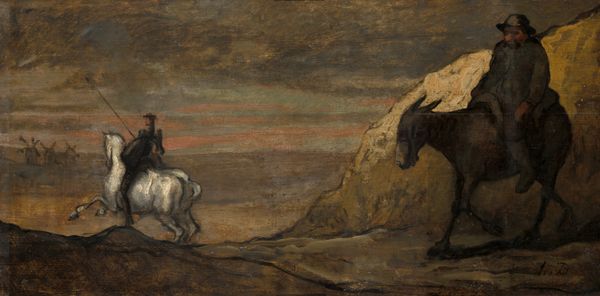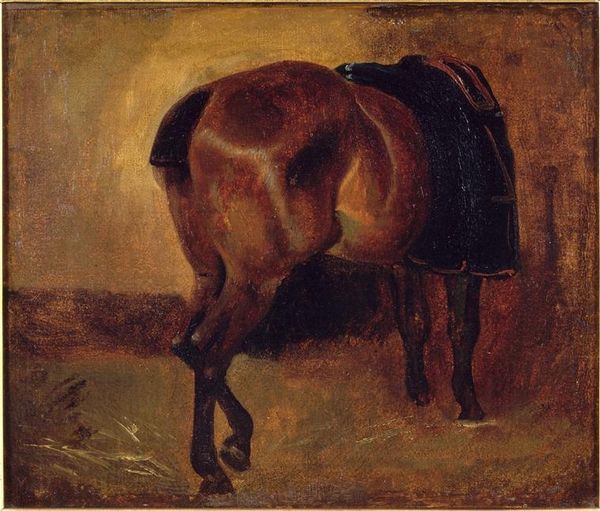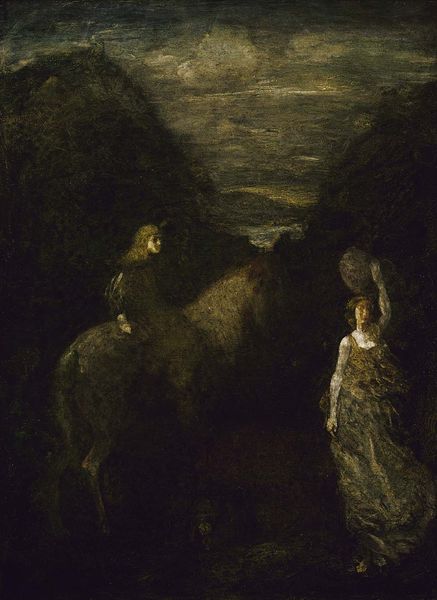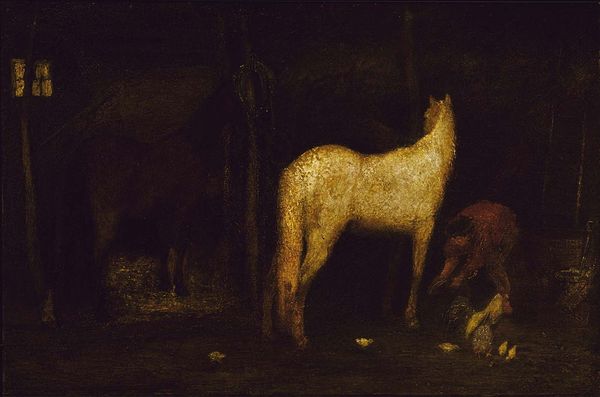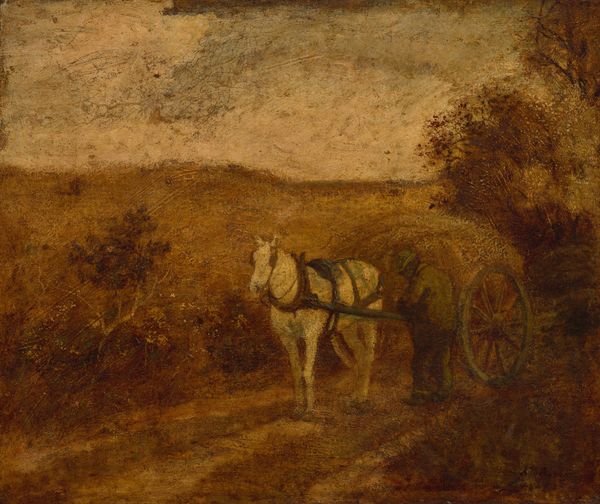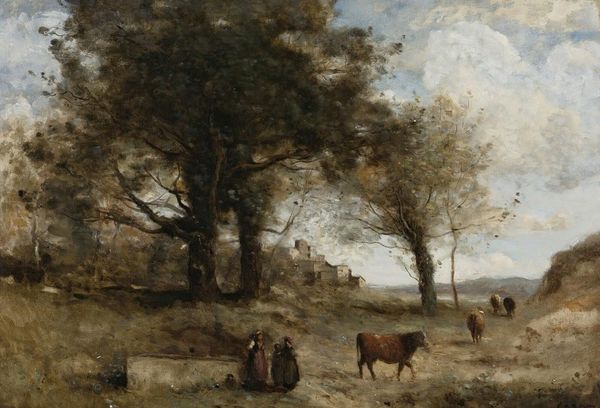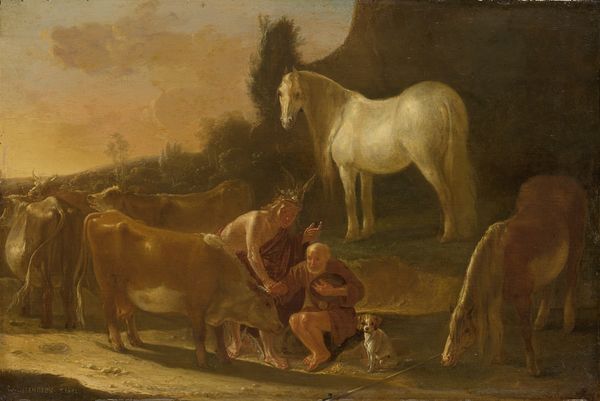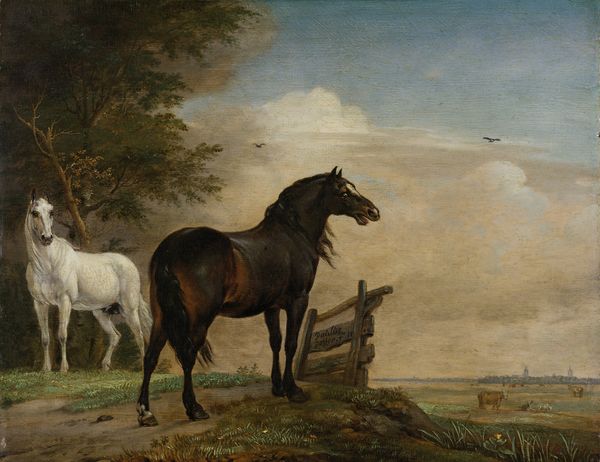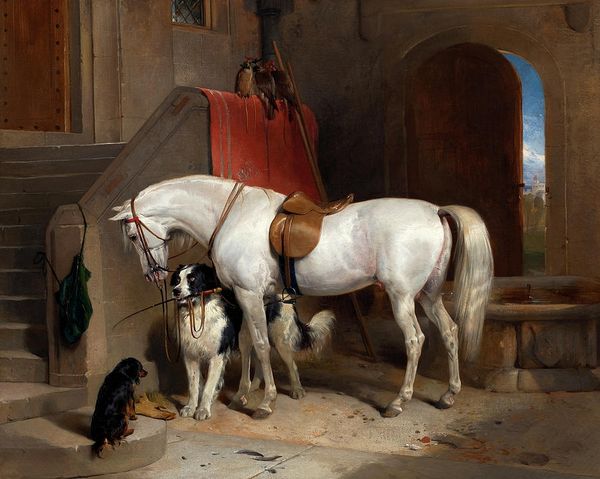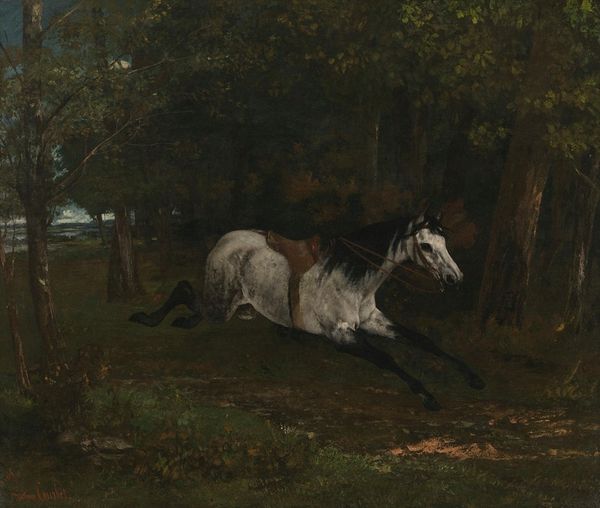
painting, oil-paint
#
animal
#
painting
#
oil-paint
#
landscape
#
charcoal drawing
#
charcoal art
#
oil painting
#
romanticism
#
realism
Copyright: Public Domain: Artvee
Editor: This is Honoré Daumier’s "L’abreuvoir," an oil painting from around 1847. It’s quite dark, and the forms seem to emerge from the shadows. It gives the scene a quiet, almost dreamlike quality. What do you see in this piece? Curator: I see a convergence of enduring symbols. The horse, for centuries, has carried the weight of human aspiration and burden. Daumier paints them at the watering trough, heads bowed in humility or exhaustion. Don’t you think this intimate moment evokes a primal scene of rest and restoration? Editor: I do, but I also wonder about the rider. The figure is so blended into the scene, nearly indistinguishable from the horses. Is there any symbolism in their connection? Curator: Absolutely. The rider and horse, sharing the same moment of respite, might represent our own symbiotic relationship with the natural world. The indistinct form could reflect the dissolution of ego, the blending of human with animal instinct, as much a practical co-existence as one charged with human anxieties around our dominance of the natural world. Editor: So, it’s less about individual portraits and more about universal themes of labor, dependence, and our relationship to animals? Curator: Precisely. The very act of drinking carries a weight. Water is life, the subconscious sea, cleansing, sustenance... Editor: Thinking about those themes definitely enriches my reading of this piece. Thank you! Curator: Indeed, and it highlights the importance of understanding art as a reflection of the human condition.
Comments
No comments
Be the first to comment and join the conversation on the ultimate creative platform.
